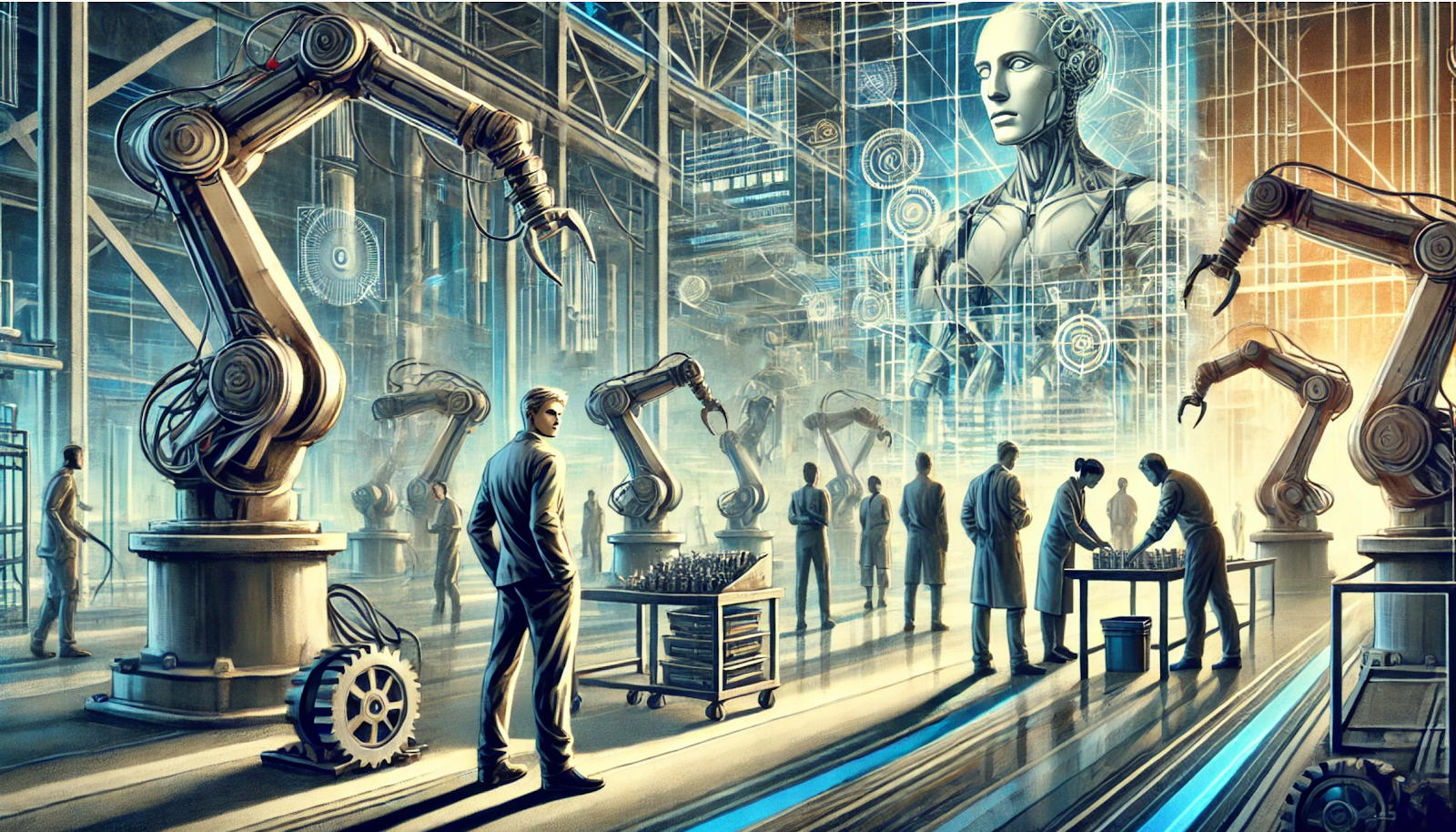Governments and philanthropists can play a role in
supporting AI diffusion across various sectors. Their involvement is as
critical as that of businesses and researchers in driving forward this
technological revolution. However, forging a public strategy for AI adoption
remains a complex and unresolved task.
The rapid embrace of AI technology calls for a focus on
leveraging the collective experiences of its extensive user base, in
conjunction with market forces and entrepreneurial innovation. The United
States, and California in particular, stands out for its globally admired
technology innovation ecosystem. This environment, driven by dynamic market
forces and a spirit of entrepreneurship, creates an ideal setting for AI
development. Nevertheless, the lack of a cohesive public strategy in managing
this evolution might lead to varied and possibly conflicting outcomes and
objectives in AI adoption.
At the heart of this matter is the public's significant
interest in the effective deployment of AI. The technology holds the potential
to substantially boost the economy, revolutionize public services, reshape
education, and enhance social welfare systems. Yet, it is essential to balance
these advancements with equitable and efficient technology adoption, ensuring that
AI contributes to resolving rather than exacerbating societal inequities.
Moreover, the integration of AI in public services presents
a dual advantage: improving efficiency and extending service accessibility to a
wider population segment. The key challenge is to deploy these technologies
inclusively, considering the diverse needs of the community. While the swift
adoption of AI offers numerous opportunities, it also demands strategic and
thoughtful planning. This strategy must aim not only to capitalize on AI's
benefits for economic and service improvements but also to guarantee that its
societal integration is equitable and inclusive, aligning technological
progress with the greater public interest.
1. Get
real
The first guiding principle in AI adoption is the pursuit of
a balanced perspective, essential in navigating between two extreme viewpoints.
On one side, there's the dystopian view that envisions AI as a catalyst for catastrophic
job losses. This narrative often emerges from a fear of the unknown, harking
back to historical instances where technological advancements initially
disrupted the job market. However, this perspective tends to overlook how
technological evolution has historically opened up new job opportunities and
industries. There is also fear that AI poses an existential threat to humanity.
These two mutually exclusive dooms day scenarios are amplified by the media.
On the other side lies the overly optimistic view that sees
AI as a cure-all for every challenge, and that we quickly transition to labor
free economies and enjoy abundance without work. This standpoint emerges from
recognizing AI's immense potential to improve efficiency, solve complex issues,
and bring novel solutions to various sectors. However, it can underestimate the
challenges and limitations of implementing AI technologies, such as ethical
considerations, the need for comprehensive data, and crucial human oversight.
A more realistic outlook suggests that the future of AI will
likely follow historical trends, presenting both opportunities and challenges.
Similar to the impact of the internet and mobile technology, AI is expected to
enhance productivity and stimulate economic growth, but not bring us quickly
into the world without scarcity. This advancement could manifest through more
streamlined operations, improved data analysis, and innovation in diverse
sectors.
Both extremes discourage pragmatic, thoughtful planning. The
society cannot control a change that it cannot fathom. A balanced approach to
AI adoption acknowledges AI's significant potential to contribute to
productivity and economic growth. Simultaneously, it recognizes the importance
of strategic management to facilitate a smooth transition in the job market and
society at large. This approach avoids the pitfalls of extreme views, opting
instead for a nuanced and realistic understanding of AI's role in shaping the
future.
2. Democratize
technology
The second principle in AI adoption emphasizes the
democratization of AI technology. This concept is based on the idea that AI's
benefits should be broadly accessible, not just limited to a small group of
experts. This approach to democratizing technology mirrors developments in
fields like web design, which has evolved from a specialized skill for
programmers to a more universally accessible tool. The devolution of expertise has
been a steady trend, and we must not allow it to reverse with AI.
In AI, democratization means expanding access beyond tech
experts to include educational institutions, public agencies, and businesses.
This approach prevents potential monopolization by a few vendors who might control the market
with proprietary platforms and high licensing fees, which could shift the focus
of AI from innovation to profit, limiting its societal benefits.
Democratizing AI fosters grassroots innovation, reducing
vendor-dependency, enabling individuals and organizations to develop custom AI
solutions for specific needs and challenges. This can spur a wave of creativity
and problem-solving in sectors like education, healthcare, social services, and
public administration.
Additionally, democratizing AI plays a critical role in
reducing the risks of AI reinforcing existing inequalities or biases. When AI
is accessible and understandable to a diverse group, it is more likely to be
used inclusively, considering a wide range of perspectives and needs.
In essence, democratizing AI is about making it a tool for
many, empowering a wide user base to understand, engage with, and apply AI in
ways that enhance their work and lives. This approach ensures that AI's
benefits are widely distributed and its development reflects a variety of
voices and needs.
3. Regulate
fine-tuning
The third principle in AI adoption underscores the vital
role of governments and philanthropic organizations in regulating AI's
"fine-tuning" process. This principle acknowledges their significant
influence in shaping AI's ethical development.
Fine-tuning in AI involves refining algorithms and their
outputs to align with specific ethical guidelines and objectives. This step is
crucial to ensure AI systems adhere to societal norms. A key part of
fine-tuning is filtering out harmful or inappropriate content, such as
pornography, conspiracy theories, or explicit violence. This process not only
prevents the spread of such content but also ensures AI's positive contribution
to society.
However, fine-tuning goes beyond just excluding harmful
content. It also includes identifying and rectifying inherent biases within AI
systems. AI models, trained on vast datasets, can inadvertently reflect
societal biases. Left unchecked, these biases may reinforce or exacerbate
societal inequalities. For example, AI by default generates images of
unspecified people as white males, reflecting
a bias in training data. Correcting such biases is essential to make AI
inclusive and representative of global diversity. Governments must compel IT
companies to spend more on fine-tuning, and make their fine-tuning practices
more transparent.
However, governments and philanthropist may play an active
role in funding AI ethics research, promoting diversity in training data, or
setting up bodies to oversee and evaluate AI systems for biases.
4. Support
equity
The fourth principle in AI adoption is about addressing
areas where market forces alone may not suffice, particularly concerning the
equity implications of AI. This principle calls for targeted support in
segments where the private sector might not adequately invest due to limited
market incentives.
A critical area of focus is technology for people with
disabilities. Market mechanisms often fail to address these needs adequately,
as the market for assistive technologies can be too small to lure significant
private investment. This gap necessitates government or philanthropic
intervention to develop AI solutions that are innovative, inclusive, and
accessible to everyone, regardless of their physical or cognitive abilities.
Another area is AI's role in bridging language barriers and
aiding language learners and linguistically marginalized communities. Here
again, market forces may not be enough to drive the development of AI tools
tailored for these groups. Government and philanthropic support is essential in
creating AI applications that meet diverse linguistic needs, promoting
inclusivity and understanding.
In education, AI's impact is particularly profound.
Traditional reliance on written assignments and assessments means integrating
AI into education is not just about investment but also about understanding
learning theories and pedagogical practices. While entrepreneurs are adept at
crafting innovative tech solutions, they may lack the necessary expertise in learning
sciences to ensure these tools are effective in a learning context. Thus,
additional support in research, development, and training is crucial for AI to
positively transform educational practices.
Contrastingly, sectors like entertainment, which are more
adaptable and resource-rich, are likely to manage AI-driven disruption
independently. However, more public-oriented sectors such as social services,
education, and medicine require substantial support from governments and
philanthropic organizations. These sectors are pivotal to societal well-being
and equity; their effective navigation of AI integration is crucial for the
equitable distribution of AI benefits.
In summary, strategic AI adoption and integration is
imperative, especially in sectors where market forces are insufficient. This
strategy should include support for education, social services, and disability
support to ensure AI serves the public good effectively. The involvement of
governments and philanthropic organizations is critical in providing necessary
resources, guidance, and regulatory frameworks. This ensures the development
and implementation of AI in ethical, equitable, and universally beneficial ways.











